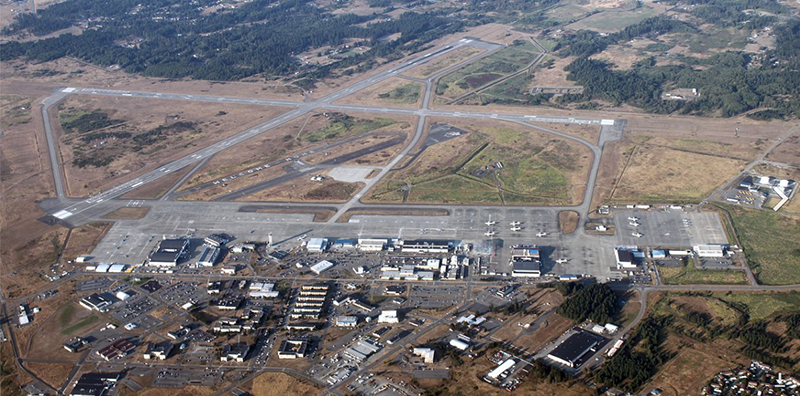||| FROM CAPT. MATT ARNY, COMMANDING OFFICER, NAS WHIDBEY |||
Numerous area media outlets, including The Seattle Times, published stories, which cited studies that have raised questions about whether Navy jet noise affects Southern Resident Killer Whales (SRKW) and the soundscape of the Olympic Peninsula. We disagree with some scientific methodologies and conclusions researchers made in these studies.
One study states noise from Growlers disturbs SRKW contributing to their harm from collective pressures. Researchers recorded the sound of takeoffs at the airfield in the water directly adjacent to the runway, with our collaboration.
We do not believe these studies demonstrate that very short durations of localized noise (take-off from a runway) will have significant effects on the SRKW where data shows they seldom visit. Likewise, we disagree with extrapolating this data across the Puget Sound, as our aircraft do not fly a take-off profile in other areas where the SRKW habitually lives and feeds.
Researchers also recorded aircraft noise from within the Olympic Peninsula Military Operations Area (MOA), which overlays the western 25 miles of the peninsula and which the FAA designated for military training flights in 1977. The data they presented did not substantiate claims that Navy-related aircraft noise is destroying the Park’s soundscape or is harming the Park’s wildlife.
I have visited these areas from Hurricane Ridge to the Hoh Rain Forest with my family and have heard sounds from Growlers myself. The U.S. Navy has flown over the Olympic Peninsula and throughout the Pacific Northwest for decades since the 1920s and from NAS Whidbey Island since the 1940s.
This is a critical training area for our military due to the unencumbered airspace. Comparatively, our flights over the Olympic Peninsula are
relatively low in number. During a normal day of air traffic departing or arriving from multiple airports on the Olympic Peninsula and surrounding Puget Sound, about seven percent of that traffic involves military aircraft.
We average ten flights to the Olympic MOAs per day over the workweek and rarely fly on weekends. All of our flights in the MOA operate above 6,000 ft., ninety-five percent are above 10,000 ft. and 75 percent are above 20,000 ft. We strive to keep this area as undisturbed as possible and make every effort to minimize effects in places we train strictly adhering to environmental regulations.
What many people do not realize is that being good stewards of the environment is critically important to conducting our national security
mission at sea, in the air and on land. Your Navy continues to be a leading contributor to scientific research and projects to improve marine habitats and to further our collective understanding of marine species here in the region. For example, we recently funded almost three million dollars in SRKW research and more than one million dollars for studies of their prey fish.
We remain engaged in partnerships and conversation while defending our nation and protecting the beautiful environment that makes this region so special for all of us.
Captain Arny has flown over 3,000 hours and 80 combat missions in aircraft including the F-14 Tomcat and F/A-18F Super Hornet. He is currently Commanding Officer of NAS Whidbey Island.
**If you are reading theOrcasonian for free, thank your fellow islanders. If you would like to support theOrcasonian CLICK HERE to set your modestly-priced, voluntary subscription. Otherwise, no worries; we’re happy to share with you.**








